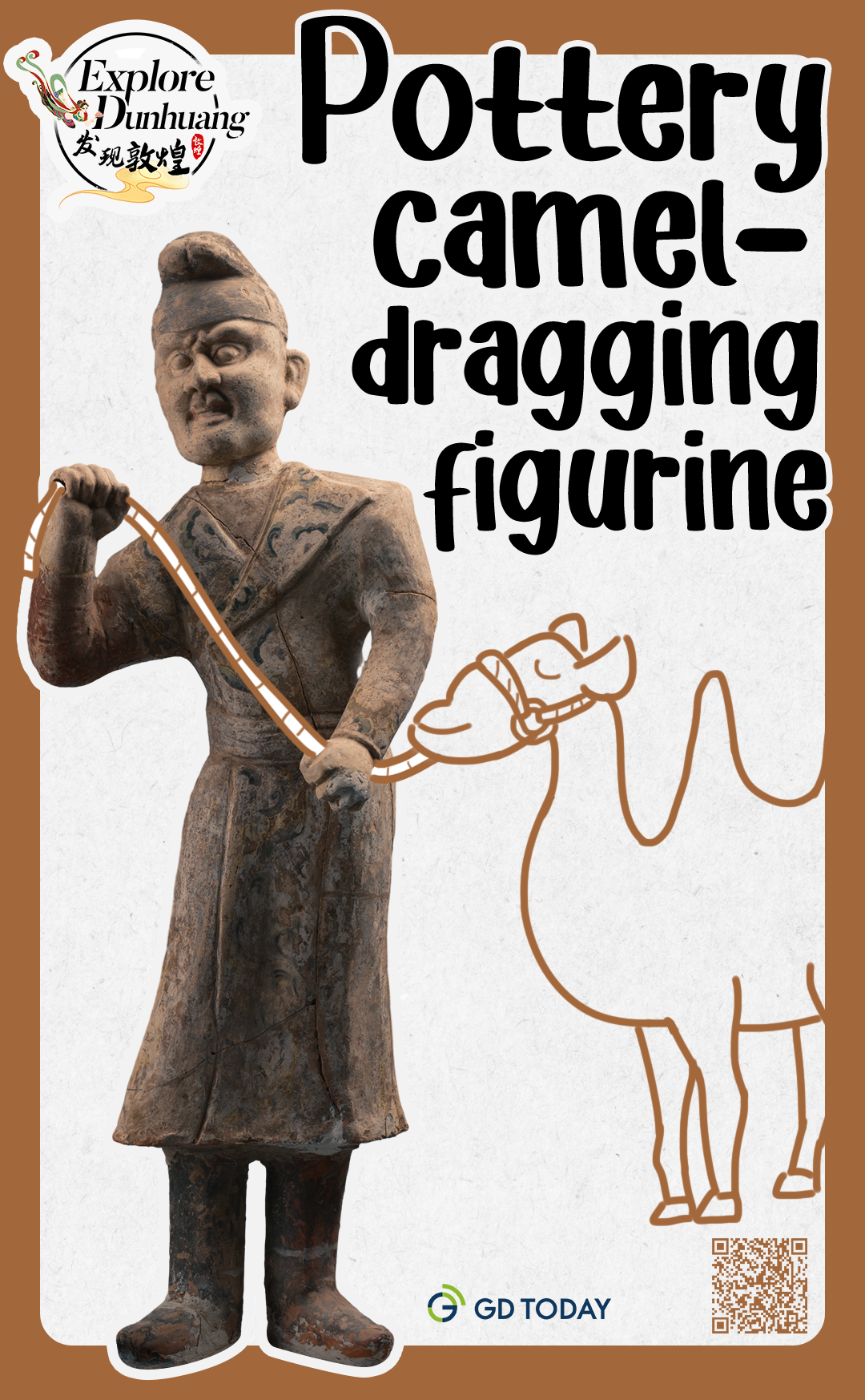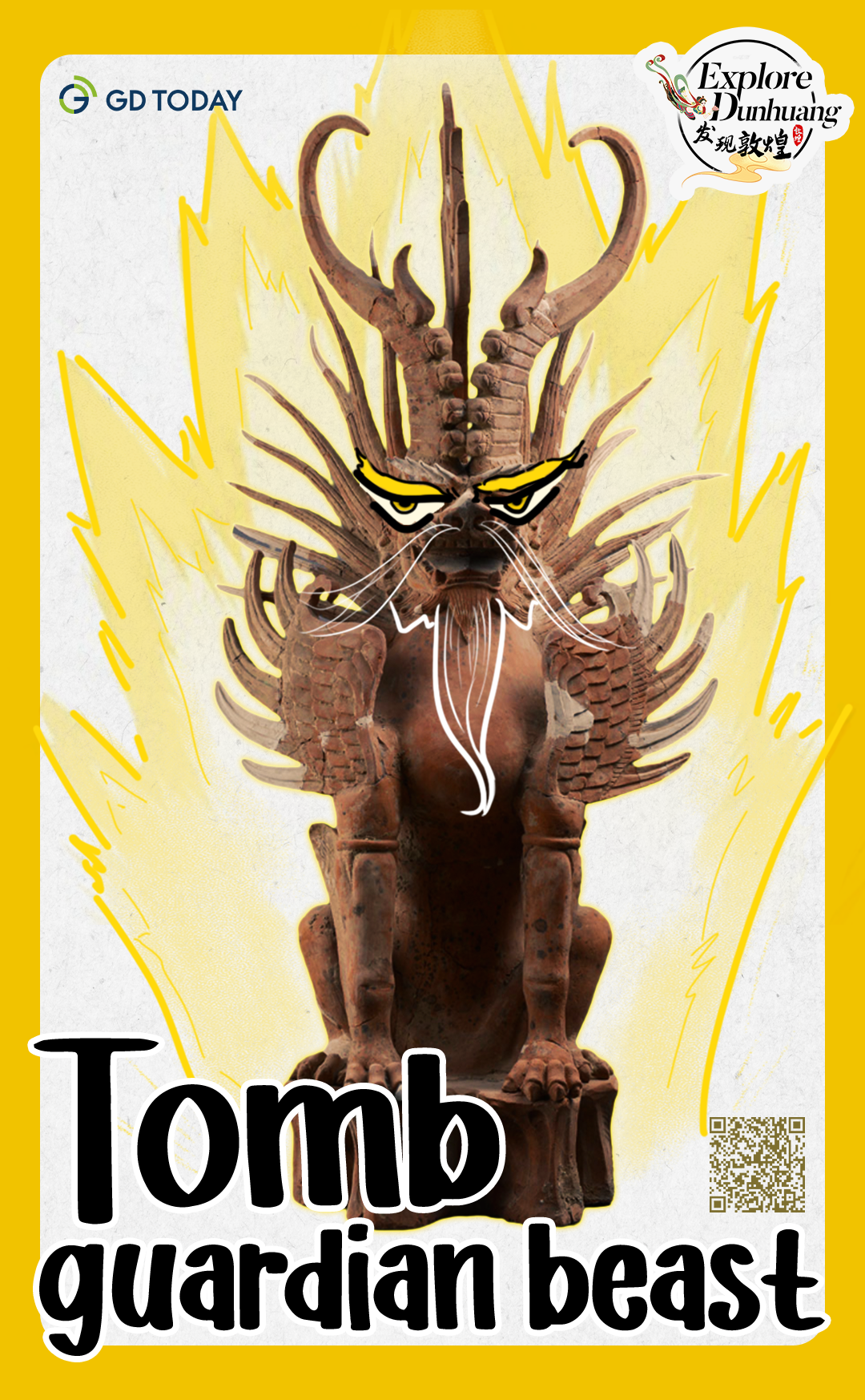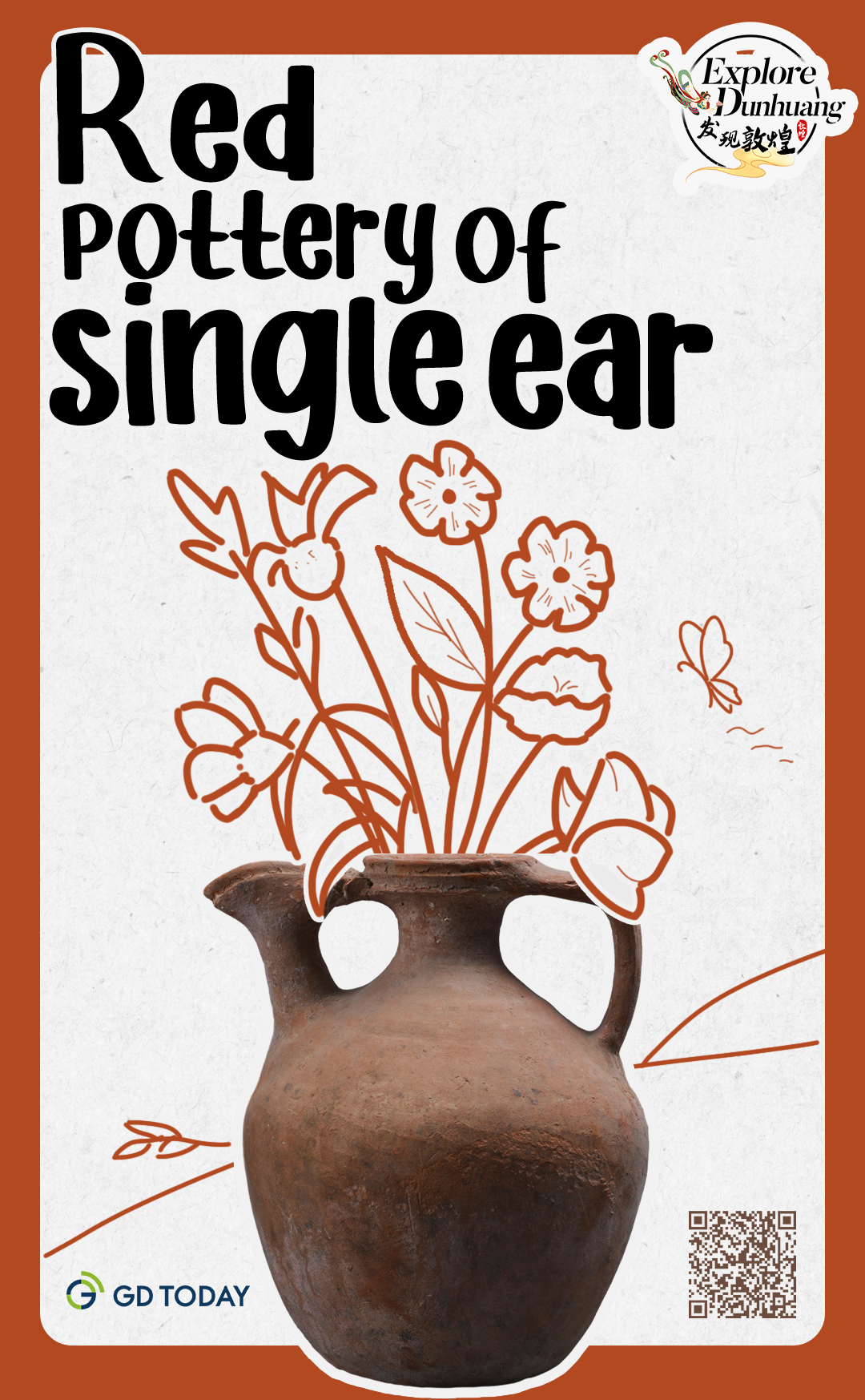Editor's Note: The 6th China Silk Road (Dunhuang) International Cultural Expo kicked off on September 6, 2023 and will last for two days in Dunhuang, Northwest China's Gansu province. As a key pass along the ancient Silk Road, Dunhuang is home to the UNESCO World Heritage Site Mogao Grottoes, the Mingsha Mountain and Crescent Spring Scenic Spot, and so on. Starting from September 4, GDToday will bring you an in-depth exploration of the city of Dunhuang.
Situated in a three-story building in the downtown area of Dunhuang City, the Dunhuang Museum displays over 13,000 pieces (sets) of cultural relics. These exhibits witnessed the flourishing social development and cultural exchange between China and the West when Dunhuang was a major center along the Silk Road. Here are some treasures in the museum. Read on and have a look!
Bronze tortoise (Eastern Jin Dynasty)

The tortoise was regarded as a symbol of longevity by ancient Chinese. It's introduced that the bronze tortoise as the funeral object may suggest the advanced age of the tomb owner. Meanwhile, with a sense of majesty, it also has the function of guarding the grave, showing the high social status of the owner.
Pottery camel-dragging figurine (Tang Dynasty)

Dunhuang was one of the first trading cities encountered by merchants arriving in China from the West. In the Tang Dynasty, the city was one of the main gathering places for nomadic tribes and foreigners, who were generally called Hu people (Chinese: 胡人).
The figurine's prototype is a man leading a camel in a foreign merchant caravan. Furthermore, its garment overlapping at the front and close to the right side is a traditional clothing style of the Han people, while its narrow sleeve is characteristic of the clothes of the Hu people, reflecting the cultural exchange of the ancient Silk Road cities.
Colored ceramic tomb guardian beast (Tang Dynasty)

The tomb guardian beast originated in the Warring States Period and was popular in the Sui and Tang dynasties. Ancient Chinese believed it could ward off evil spirits and protect the peace of the dead.
In the Tang Dynasty, such figurines were placed in pairs at the entrance of tomb passages to guard the door of the tomb, and the shapes of the tomb guardian beast were more exaggerated.
Red pottery of single ear (Tang Dynasty)

With a narrow and small outlet, this portable pot could avoid spilling, which was perfect for water in the desert. Its shape resembles the utensils of ancient Persia (today's Iran) and Arabs, witnessing the cultural exchange between the East and the West.
Reporter: Holly
Poster: Mia
Editor: Olivia, Steven, Monica, Jerry
















